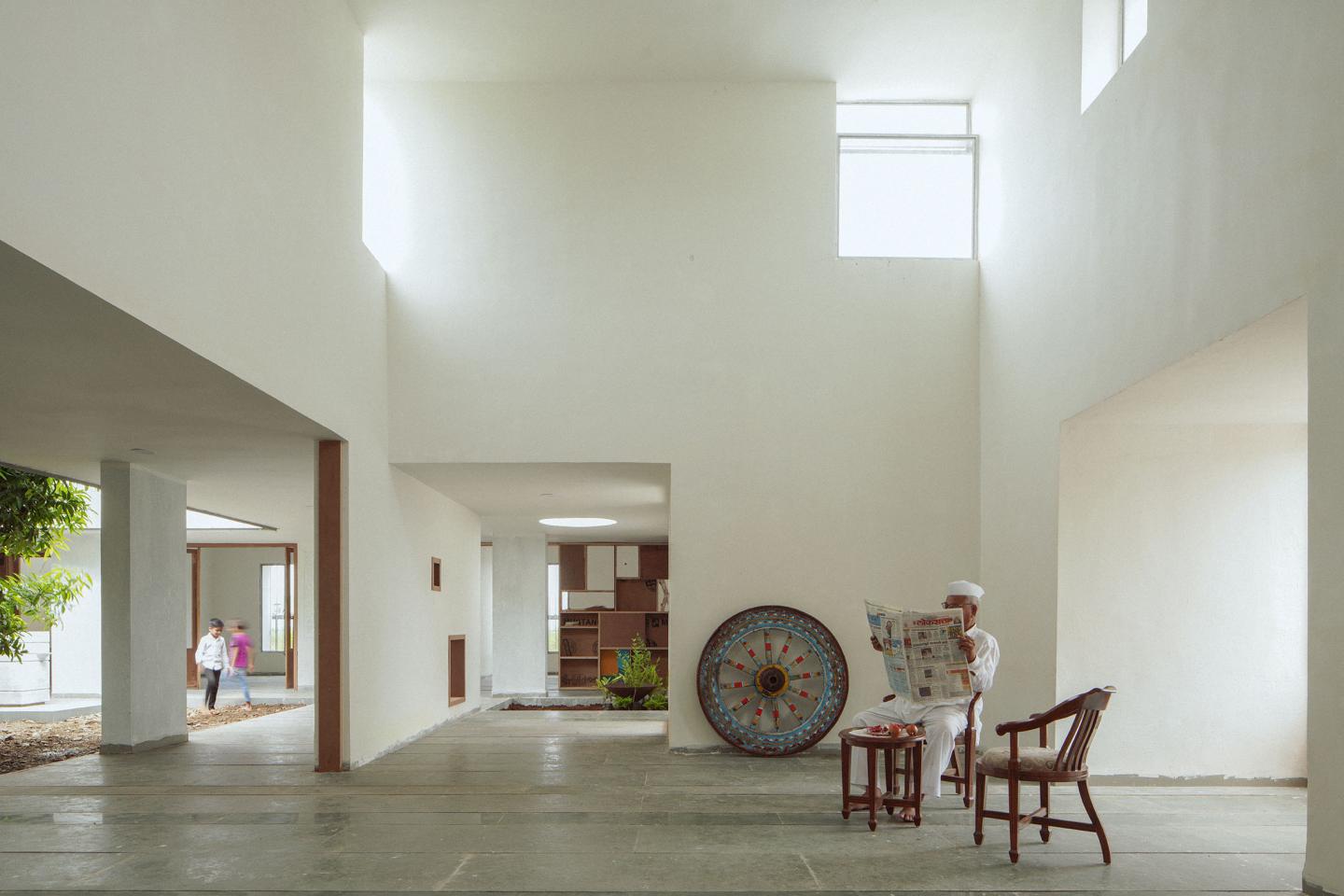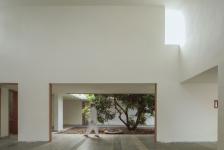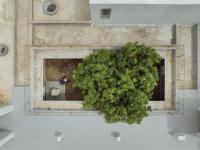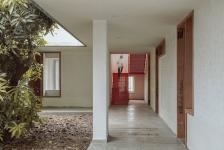Architecture is about inclusivity, just as much about the environment, design, and the inhabitant’s context. It is about making boundaries but also blurring them where need be.
Located in the rural village of Yavat, Maharashtra is The House of Tranquil Rooms, designed for an agricultural family of two brothers.
The traditional courtyard house builds upon the beauty of natural, emotional, and physical boundaries, but its essence is borrowed from the courtyard and its tree. The whitewashed exteriors reflect the simplicity of the client’s needs—he clearly wants a house that happily accommodates the family members, and the mango tree, while taking care of the utility as well as functionality. Here, it is hard to define the precedence, who comes foremost—the families, the tree, or the house; everyone is a crucial part of each other’s existence.
The house overlooks the old mango tree, and as one goes around it, the house spatially defines and blurs lines between people and nature. Walk in the courtyard corridor paved with natural stone, and a sparrow of two might fly over your head-the inclusion and respect for nature can be felt evidently. Although the family stays together under the same roof, spaces are designed with sensible appropriations to facilitate just the right quota of familial activities. Everyone has a place of their own—there are spaces carved out near the windows for reading, practising yoga, or overlooking the farms. The kids, however, have the entire house to themselves; from the entrance to the big gachchi the house is blessed with. Undoubtedly and at all times during the day, everyone’s favourite spot in the house is always near the old mango tree, after all, it binds them to the roots while giving them shade, a sense of identity, and a whole basket of kairis. Be it the unfolding of the morning newspaper in the courtyard corridor or bringing the calves in for a tour, the tree, and the holy tulsi vrindavan shower their blessing. After all, they rustle with and breathe on the same breeze that gives respite to the family members.
Very much like human tendencies the house sequentially unfolds itself, from single-height spaces for each family’s use to double-height spaces for accommodating the two families together as they have their meals in the dining room or discuss their day in the living room. The verandah welcomes fellow villagers and calves with the same warmth. The east-facing windows double up as rooms to provide refuge to anyone and everyone in the house and the intimate scale of it personally connects with the inhabitants. Since the family follows the tradition of storing grains and spare utensils, a store room is provided, alongside the utility area. The colour palette matches the site’s context—whites for advocating the colour men traditionally wear and every other colour in the house to celebrate the sarees of the household women. The memories of the children, the rituals of the men, and the giggles of the women make up the decor of the house, paired only with a hand painted bullock cart wheel or two.
With abundant and resplendent views of lush green farms from whichever aperture you peep from, it vividly makes you feel the tranquility and rootedness of living in a village, where people are humble, nature is benevolent, and lives are uncomplicated. Such is this house—built to protect, nourish, and pay homage to the village’s traditional ways of living, enhanced with small yet significant architectural interventions.
2022
2023
None
Yatindra Patil, Vijay Kharade, Bharat Yadav, Shubham Kapre and Ajay Harsure










